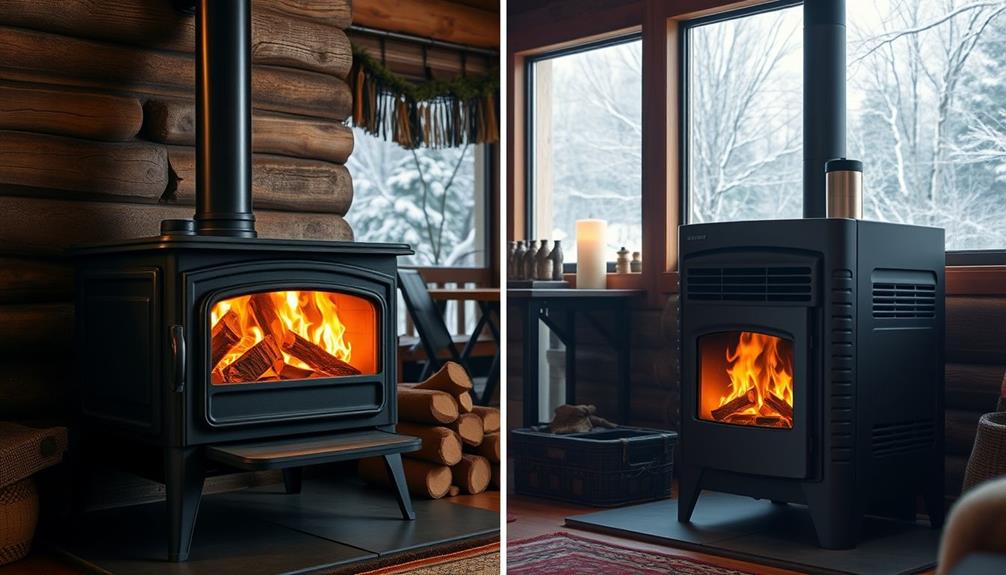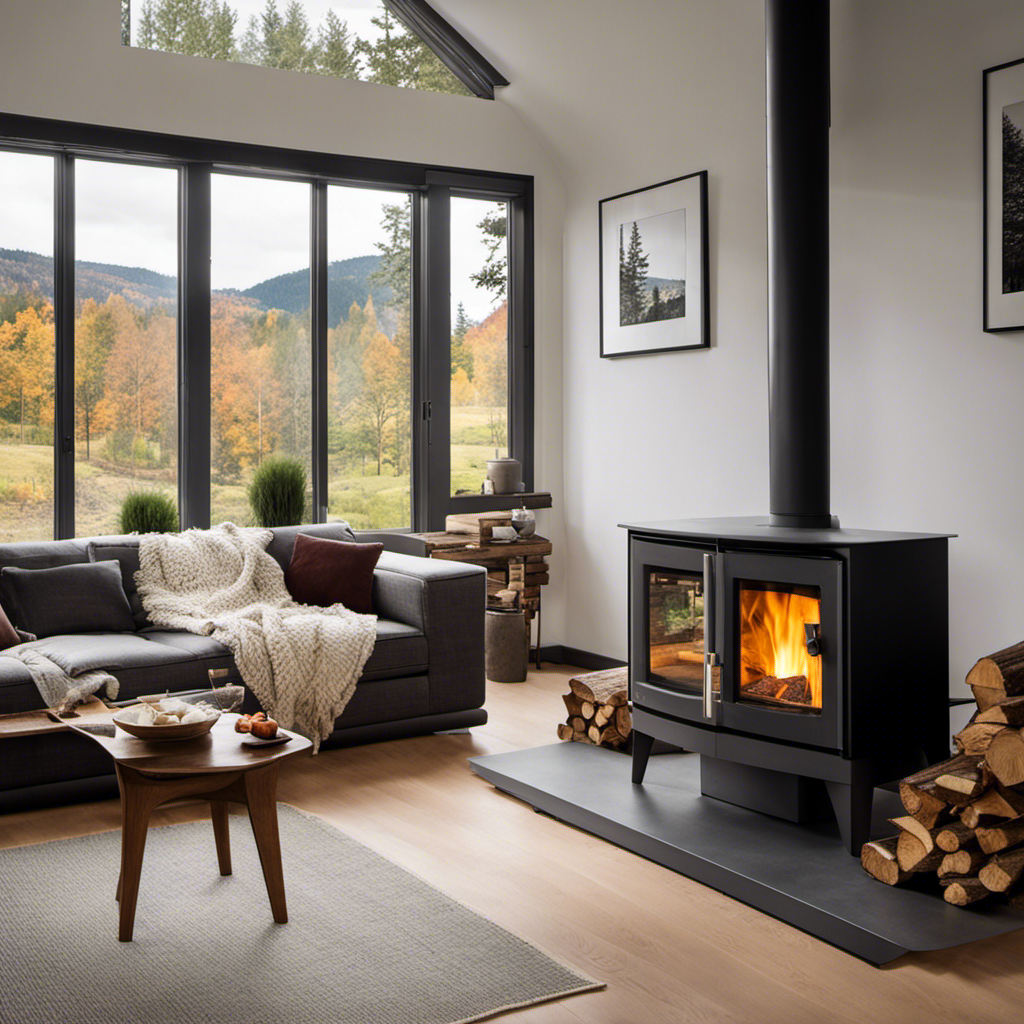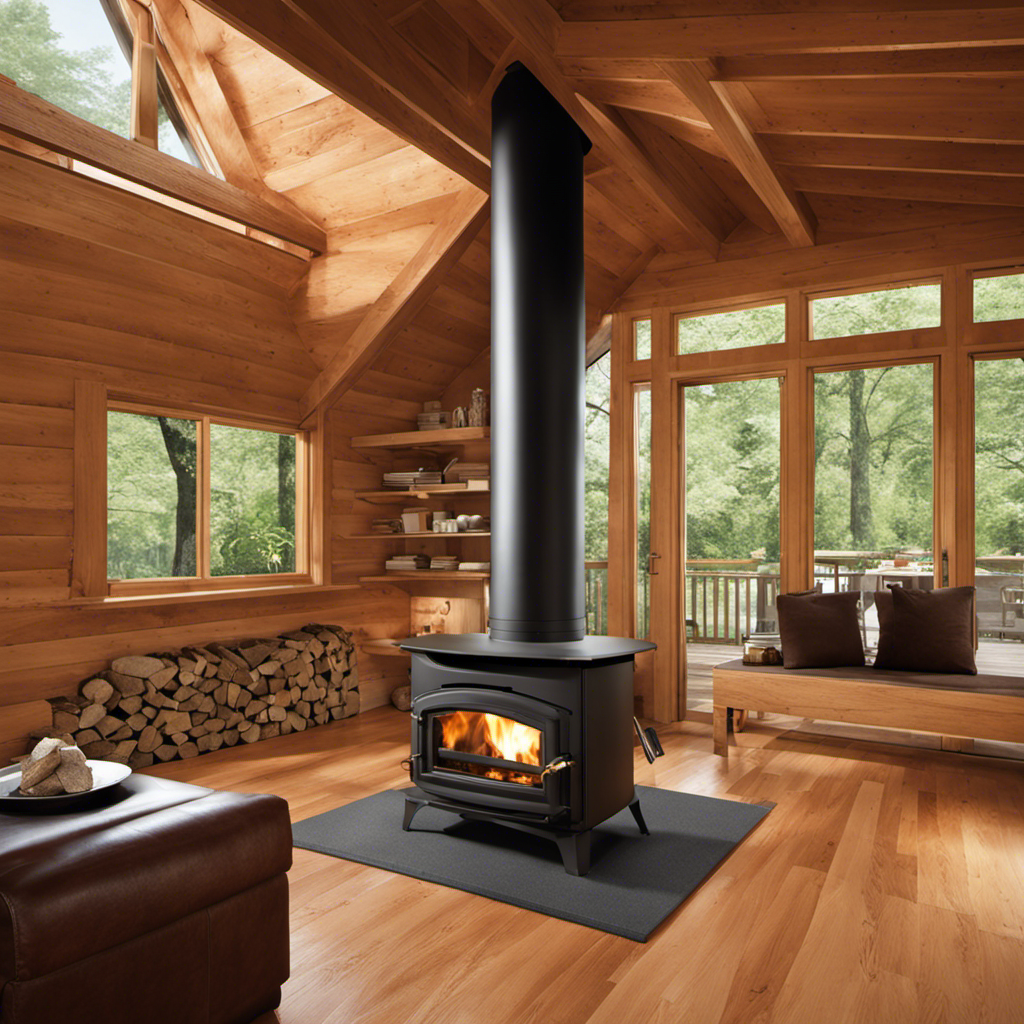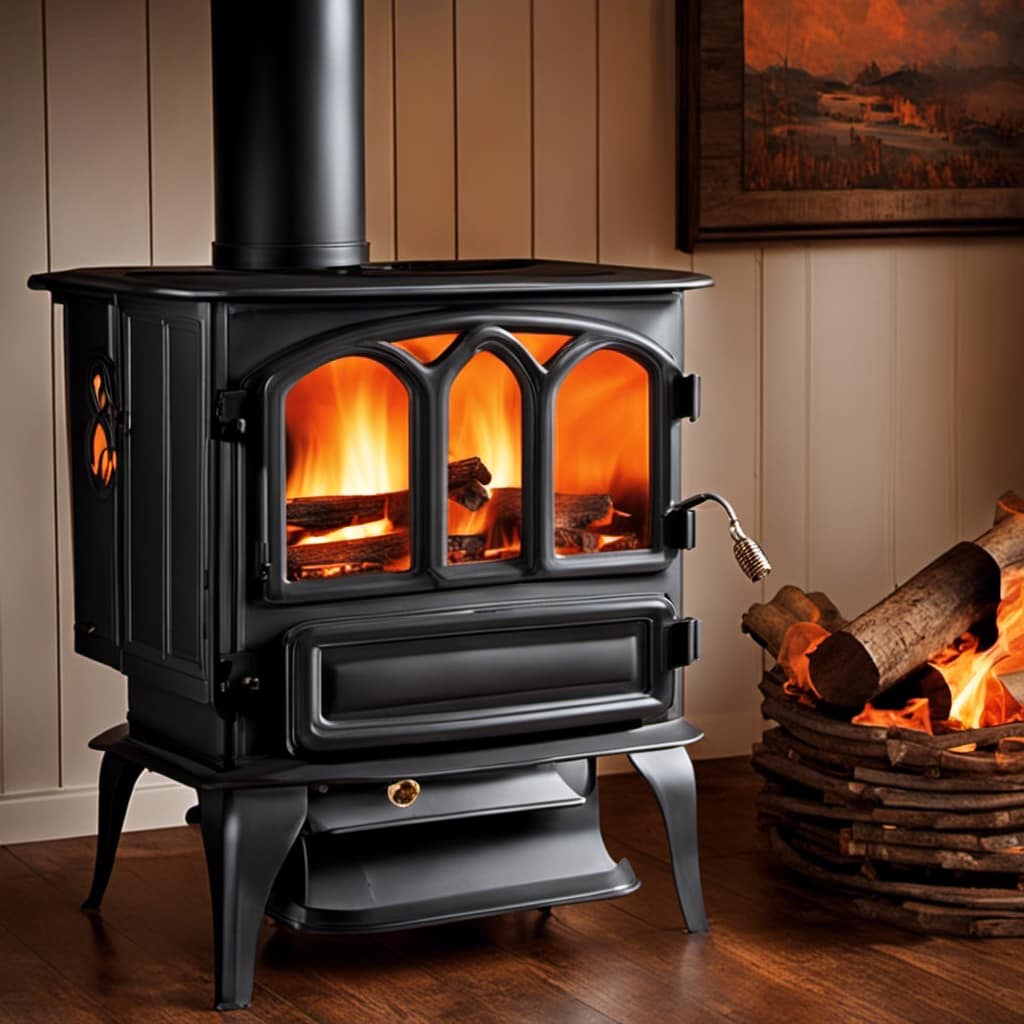
When heating my house with a wood stove, I have mastered the crucial skill of timing the opening and closing of the damper just right.
It’s all about finding that perfect balance between efficient heating and safe shutdowns.
In this article, I’ll share my insights and tips on how to effectively manage the damper for optimal heat distribution.
So, let’s dive in and discover the key to mastering your wood stove’s damper control.
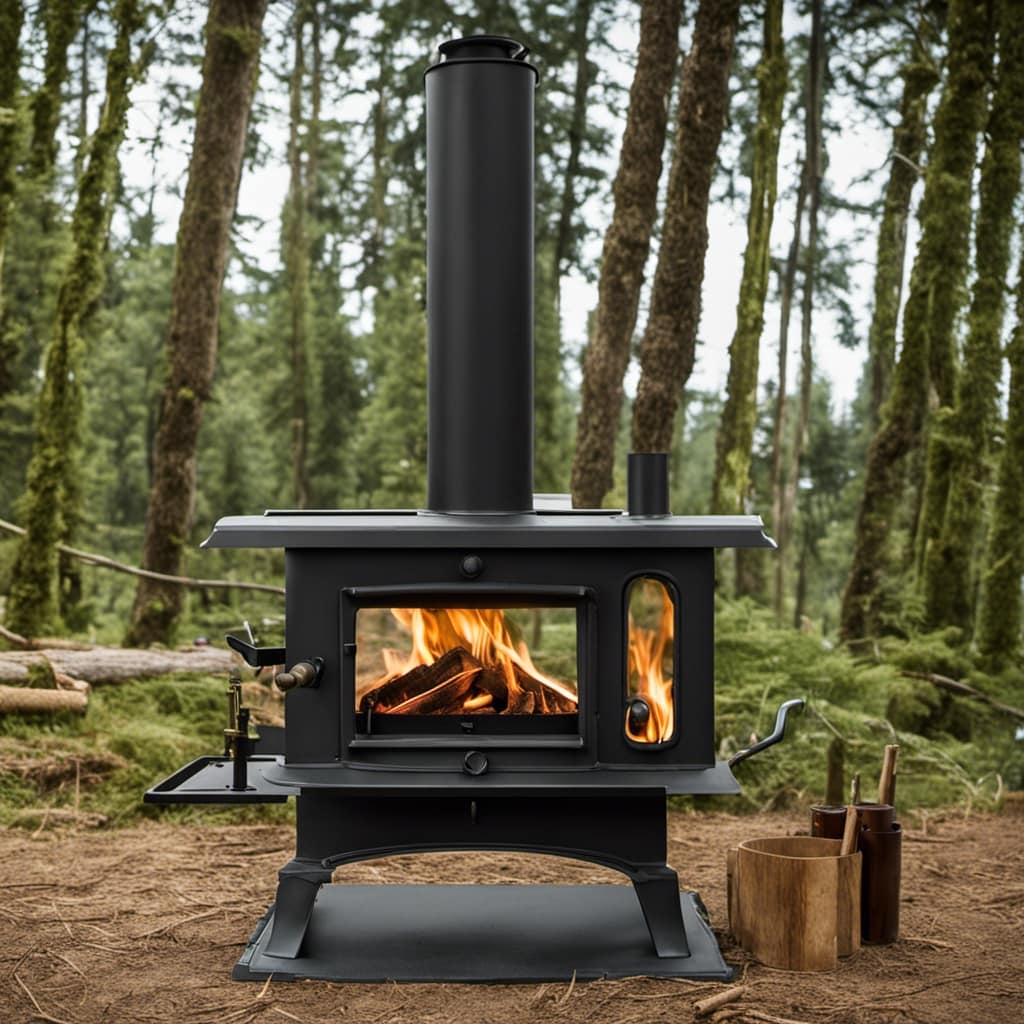
Key Takeaways
- The damper is crucial for regulating airflow, temperature, and the intensity of the fire in a wood stove.
- Opening the damper allows for more air and a hotter fire, while closing it too much can cause incomplete combustion.
- Adjusting the draft control and opening the damper promotes efficient heating by improving airflow and reducing heat loss.
- Closing the damper fully is important for safe shutdowns, and regular maintenance is necessary to prevent blockages and ensure safety.
The Purpose of the Damper
The purpose of the damper is to regulate the airflow in the wood stove. It plays a crucial role in temperature regulation.
By adjusting the damper, you can control how much air enters the stove, which directly impacts the intensity of the fire. Opening the damper allows more air to flow in, resulting in a hotter fire. Conversely, closing the damper restricts airflow, reducing the fire’s intensity and slowing down the burn rate.
It’s important to regularly maintain the damper to ensure optimal performance. Over time, soot and creosote can build up, obstructing the damper’s function. Regular cleaning and inspection will prevent any blockages and ensure efficient airflow control.
Proper damper maintenance is vital for safe and effective wood stove operation.
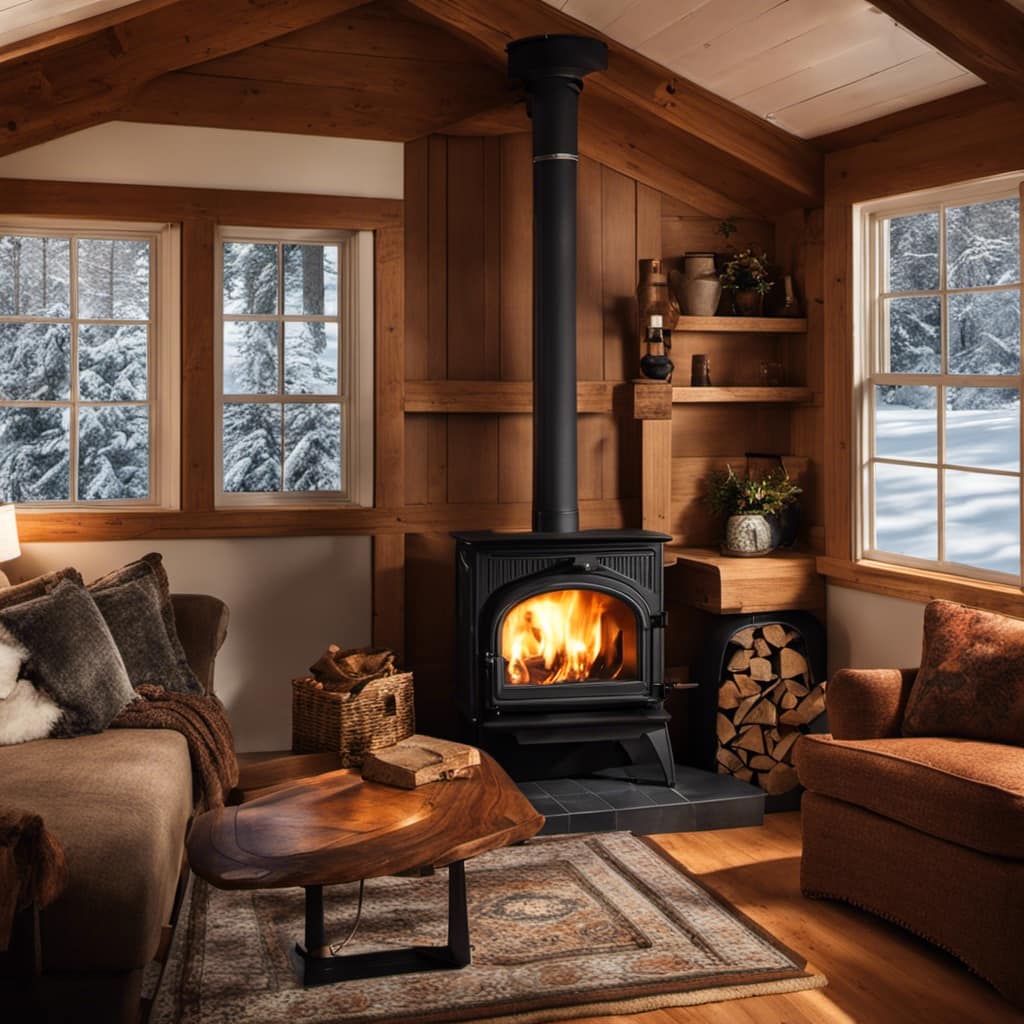
Understanding Draft Control
I find it important to understand how the draft control works on my wood stove. Proper ventilation is crucial for the efficient and safe operation of a wood stove.
The draft control, also known as the damper, regulates the air intake and exhaust, allowing for optimal combustion. By adjusting the draft control, I can control the amount of air flowing into the stove, which affects the fire’s intensity and heat output.
It’s important to open the damper fully when starting a fire to ensure proper airflow and avoid smoke buildup. However, keeping the damper open too wide can lead to excessive heat loss. On the other hand, closing the damper too much can cause incomplete combustion, leading to the release of harmful gases like carbon monoxide.
Therefore, understanding and properly adjusting the draft control is crucial for maintaining a safe and efficient wood stove operation.
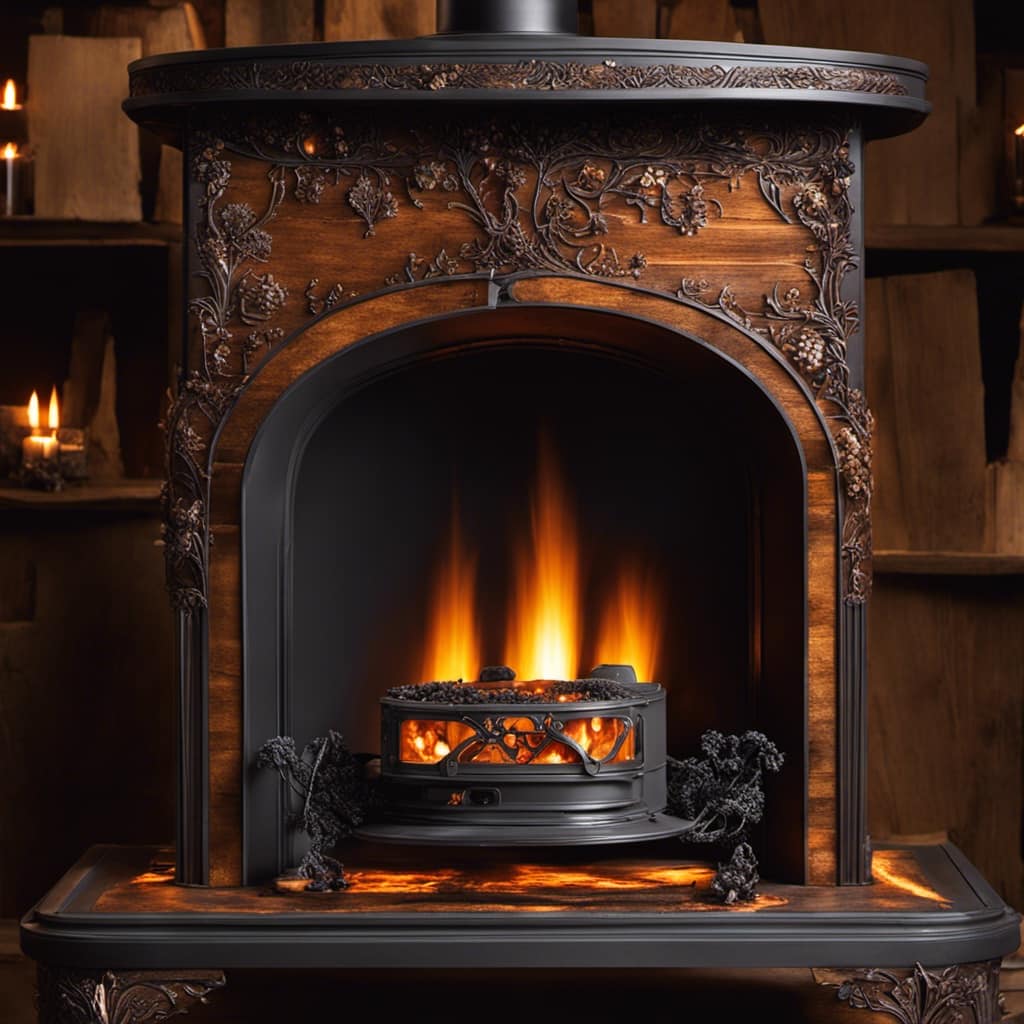
Opening the Damper for Efficient Heating
To ensure efficient heating, I adjust the draft control to allow for proper airflow and optimal combustion. Opening the damper increases airflow, which helps in the combustion process by providing more oxygen to the fire. This increased airflow promotes a hotter and more efficient burn, resulting in better heat output.
By increasing the airflow, the wood stove can reach higher temperatures and maintain them for a longer period of time. This not only improves the heating efficiency but also reduces heat loss.
When the damper is open, it allows the hot air to circulate more freely throughout the room, minimizing heat loss through the chimney.
Closing the Damper for Safe Shutdowns
When the airflow is restricted by adjusting the draft control, it ensures a safe shutdown of the heating system. Regular damper maintenance is crucial for the proper functioning and safety of your wood stove. Over time, soot and creosote can accumulate on the damper, causing it to become stuck or not seal properly. This can lead to smoke and carbon monoxide entering your home.
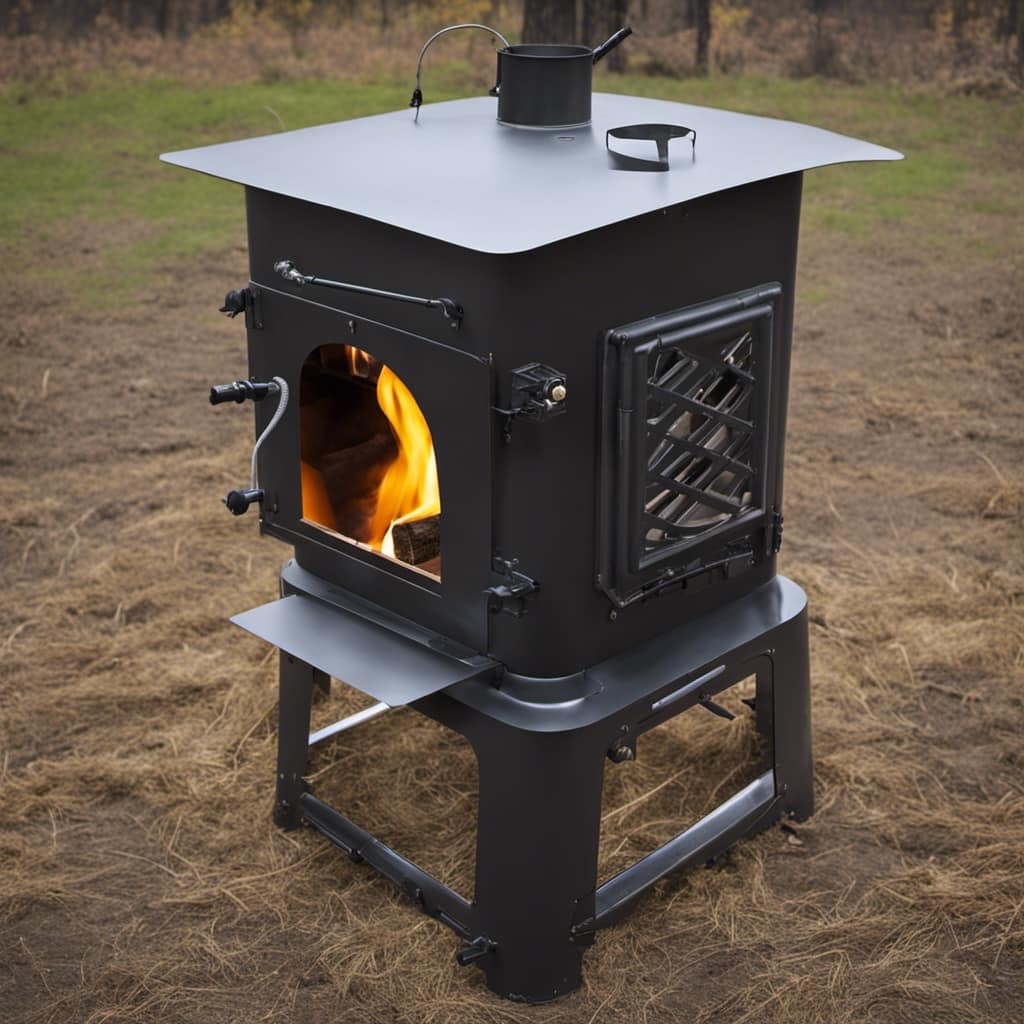
To avoid common mistakes when closing the damper, make sure it’s fully closed and not partially open. Additionally, check for any obstructions, such as debris or animal nests, that may prevent the damper from closing properly. By properly maintaining and closing the damper, you can ensure a safe shutdown of your wood stove.
Now, let’s move on to some tips for finding the right damper position.
Tips for Finding the Right Damper Position
Finding the right position for my damper ensures proper airflow and efficient heating in my home. It’s essential to find the optimal temperature and prevent smoke buildup. Here are some tips to help you achieve this:
-
Experiment with different damper positions: Adjust the damper incrementally to find the sweet spot where the fire burns efficiently without excessive smoke.
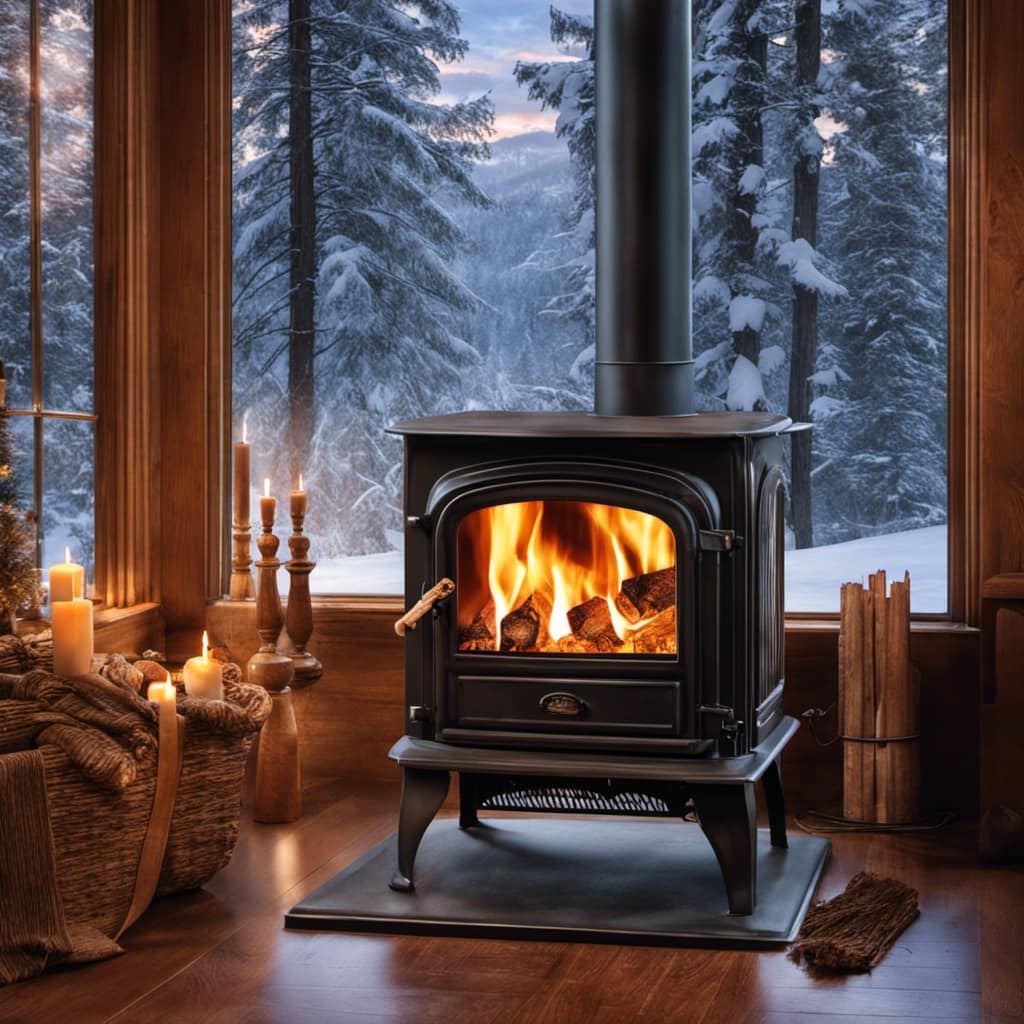
-
Observe the flames: Watch the flames closely while adjusting the damper. Ideally, you want a steady, vibrant flame without excessive flickering or smoke.
-
Monitor the temperature: Use a thermometer to gauge the temperature in your home. Adjust the damper accordingly to maintain a comfortable and efficient heat level.
-
Pay attention to smoke: If you notice smoke escaping from the stove, it’s a sign that the damper may be too closed. Open it slightly to allow for better airflow.
-
Seek professional advice: If you’re unsure about finding the right damper position, consult a professional who can provide guidance based on your specific stove and home setup.
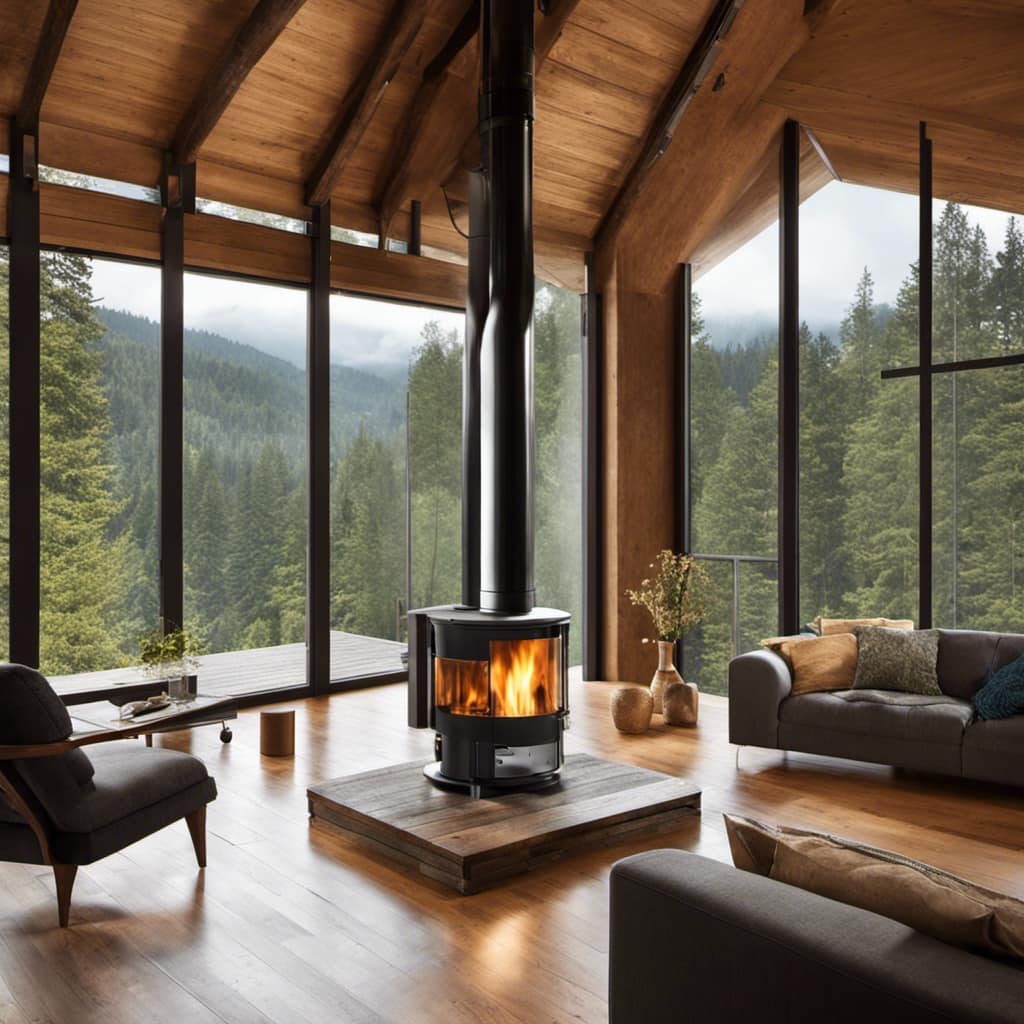
Frequently Asked Questions
Can I Leave the Damper Open All the Time to Maintain a Constant Temperature in My Home?
I can’t leave the damper open all the time to maintain a constant temperature in my home. Proper damper maintenance is important to ensure the benefits of using a damper and prevent heat loss.
How Often Should I Clean the Damper to Ensure It Functions Properly?
To ensure proper functioning of the damper, it is important to clean it regularly. Cleaning frequency depends on factors such as usage and buildup of creosote. Leaving the damper open all the time may not maintain a constant temperature.
Is It Necessary to Have a Damper Installed on a Wood Stove if It Is Not Used Frequently?
It’s important to regularly maintain the damper on a wood stove, even if it’s not used frequently. A properly functioning damper ensures energy efficiency and prevents drafts, making it a valuable component of the stove.
Can I Adjust the Damper Position While the Wood Stove Is in Use, or Should I Wait Until It Has Cooled Down?
I adjust the damper position on my wood stove while it’s in use, but I take safety precautions. It’s important to wait until the stove has cooled down to prevent any accidents or damage.
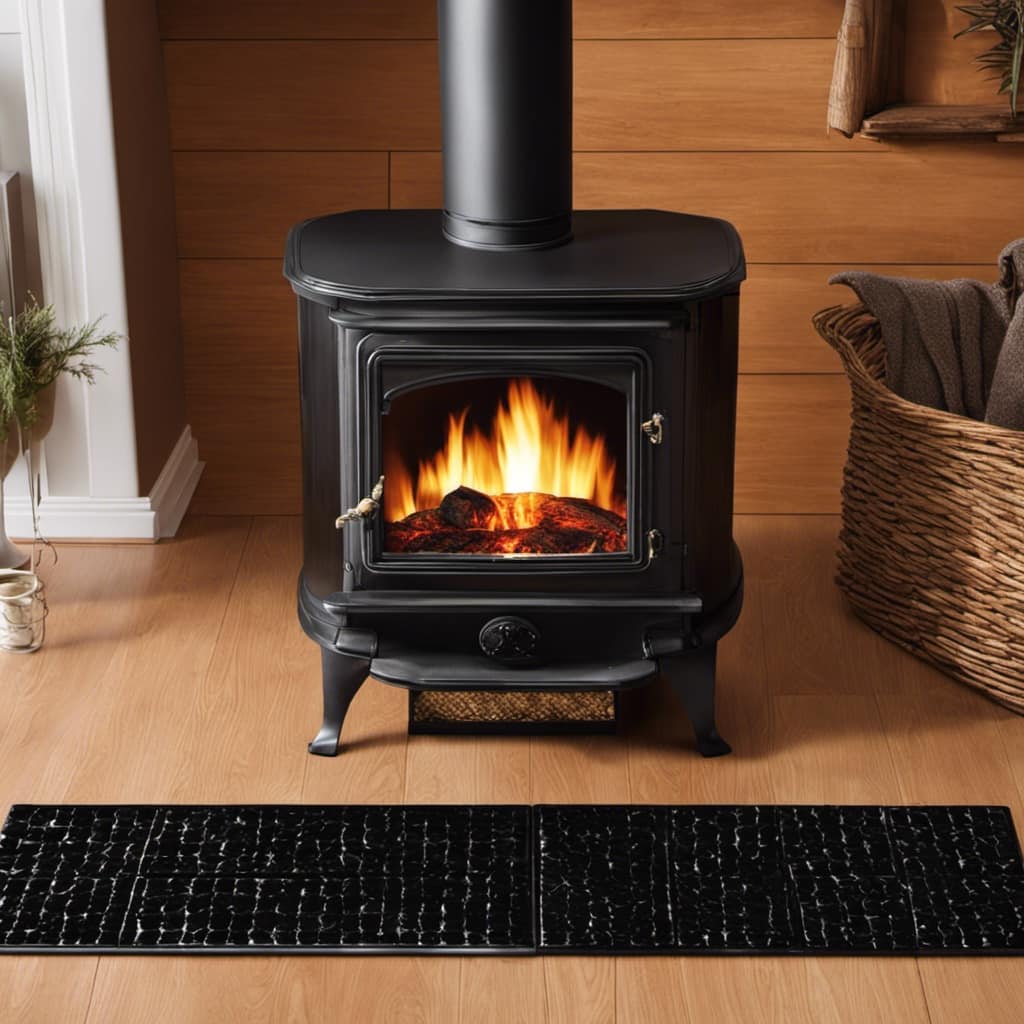
Are There Any Alternative Methods for Controlling the Airflow in a Wood Stove if a Damper Is Not Available?
There are alternative methods for controlling wood stove airflow if a damper is not available. However, using a damper on a wood stove has benefits such as regulating heat output and preventing excessive smoke.
Conclusion
In conclusion, understanding when to open and close the damper on a wood stove is crucial for efficient heating and safe shutdowns. By properly controlling the draft, you can maximize the heat output while minimizing the risk of smoke and carbon monoxide buildup.
Interestingly, studies have shown that adjusting the damper to the correct position can increase heating efficiency by up to 20%, resulting in significant energy savings and a more comfortable living space.
Growing up surrounded by the vast beauty of nature, Sierra was always drawn to the call of the wild. While others sought the comfort of the familiar, she ventured out, embracing the unpredictable and finding stories in the heartbeat of nature.
At the epicenter of every remarkable venture lies a dynamic team—a fusion of diverse talents, visions, and passions. The essence of Best Small Wood Stoves is crafted and refined by such a trio: Sierra, Logan, and Terra. Their collective expertise has transformed the platform into a leading authority on small wood stoves, radiating warmth and knowledge in equal measure.




